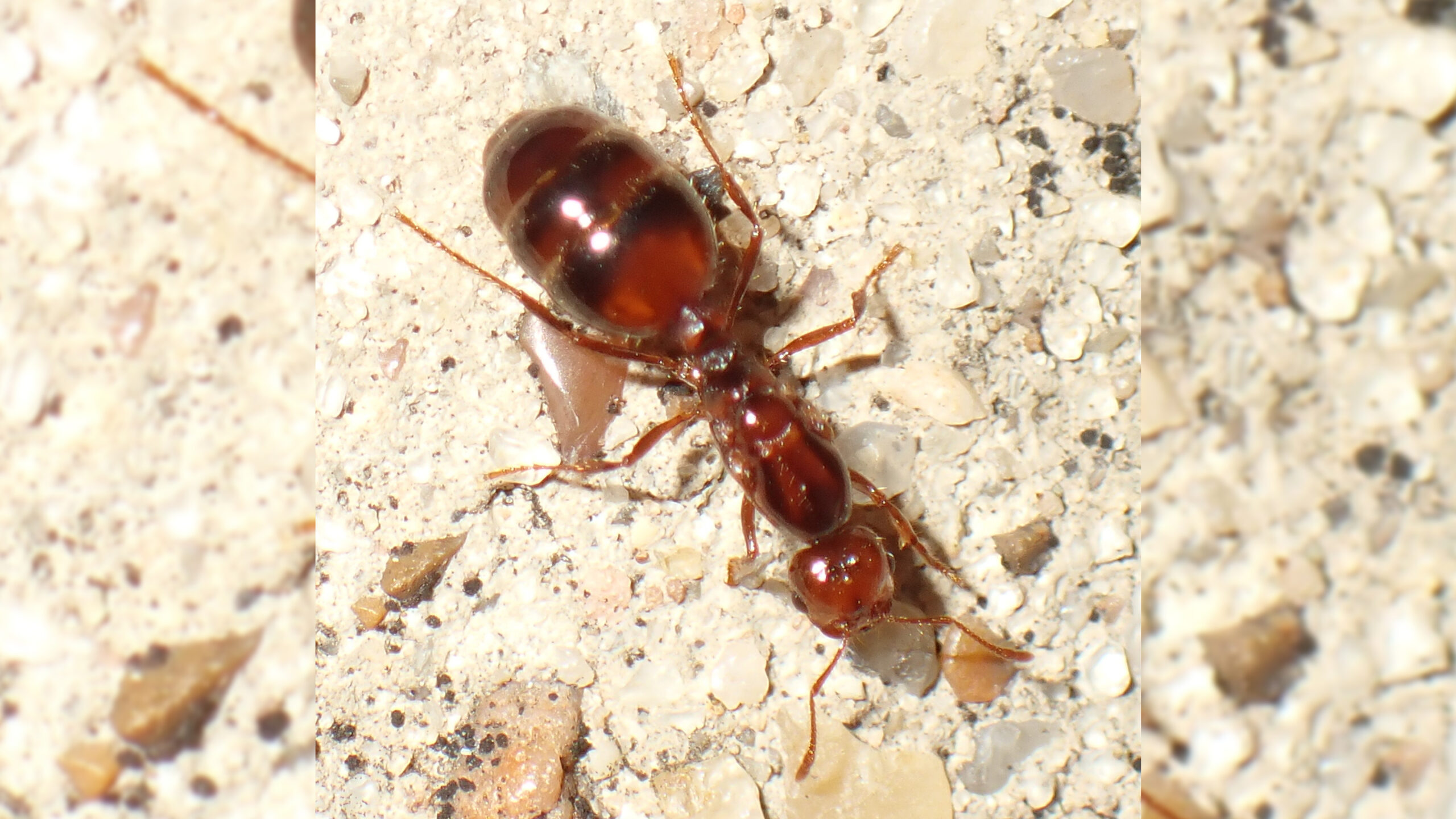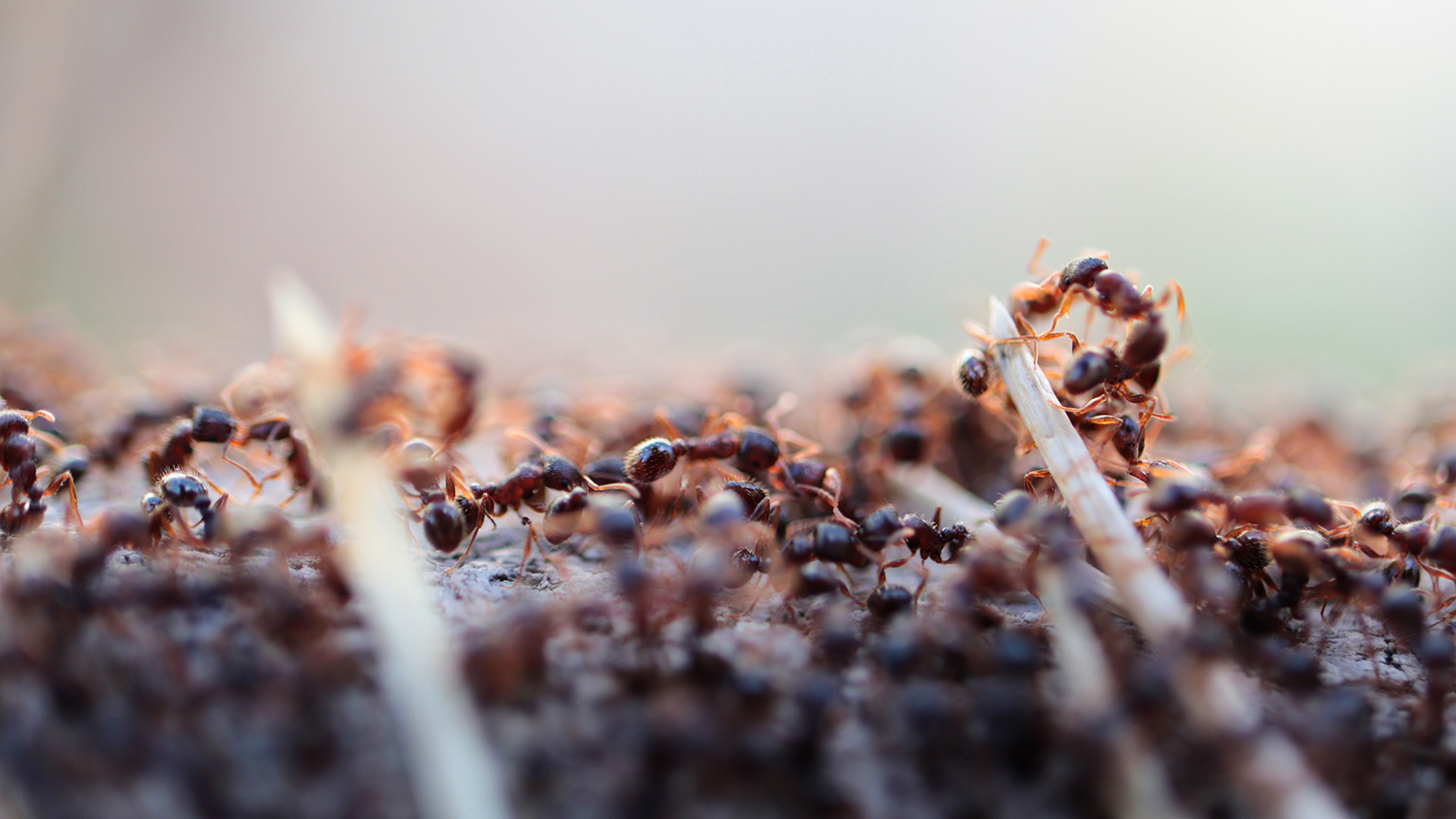Fire ants are a nasty, destructive species that were introduced to Australia in 2001. Despite their surprisingly small size, fire ants:
- Cause severe agricultural and environmental destruction
- Threaten human and animal health
- Have a significant economic cost
Fire ants are highly adaptive, with the ability to spread easily and quickly — especially when assisted (inadvertently) by humans! It’s important to remain vigilant as over 95% of Australia is vulnerable to fire ants.
Currently, the Australian government has several measures in place to control and eradicate fire ants, including monitoring, quarantine, and movement controls through the National Fire Ant Eradication Program.
Bundilla Pest Control has been working with the National Fire Ant Eradication Program on two major projects:
- Aura Harmony Project: Bundilla assists construction companies to comply with biosecurity conditions through inspecting and baiting the infrastructure zones connected two large housing estates.
- Sunshine Coast Council: Bundilla assists with preventative fire ant baiting of different organic material for their waste and resource centers.
How do I Identify if I Have a Fire Ant Problem?
It’s important to identify fire ants and nests in order to stay safe and be able to report them. Fire ants are aggressive — they will swarm and sting people and animals. Fire ant stings are painful and dangerous to your health. It’s helpful to know what to look for when identifying fire ants and be cautious if you suspect you have found an infestation.

- Appearance: Fire ants are reddish-brown with darker abdomens and two nodules between their thorax and abdomen. They are typically between 2mm and 6mm in length.
- Behaviour: Fire ants are known to be aggressive and swarm when their nests are disturbed. They can be seen in organized lines leading to and from their nests.
- Nests: Fire ant mounds are usually made of loose, crumbly soil in a dome-shaped mound typically around 40 cm high and 60 cm wide. There is no visible entrance hole at the top. Nests can be found in open areas like lawns, pastures, and fields, and also under logs, rocks, and landscaping materials.

Overall, the fire ant behaviour is one of the best ways to identify them — and it comes down to how they swarm. If you get a long stick and poke the nest and a heap of ants come out and start attacking or “swarming” the stick; that’s a huge indicator that you may have fire ants!
If you think you’ve seen fire ants, you must report them to help protect Australia from this dangerous and invasive species. If possible, take pictures of the ants and mounds while keeping a safe distance.
Common Materials That Can Carry Fire Ants
Fire ants can spread through their nuptial flight, budding (where a pair of reproductive ants start their own colony), or floating down waterways by creating rafts using their own little bodies (yes, it’s pretty gross — or cool?). However, it’s important to note that fire ants spread through human activity as well.

If you live in a fire ant biosecurity zone, or suspect you have fire ants nearby, you should be aware of the methods and materials that fire ants use as transportation in order to help prevent human-assisted spread.
- Soil, potting mix, potted plants. Yes, even a sweet, innocent potted plant can hide fire ants. Make sure to inspect your gardening materials before moving them, lest you accidentally gift some fire ants to your mother-in-law.
- Construction materials. Doing a little DIY? Fire ants will hitch a ride in sand, gravel, paving stones, you name it.
- Mulch, turf, and manure. Even your basic gardening essentials can spread fire ants!
- Timber, logs, hay, straw. Horse people and farmers should keep an eye out for fire ants and mounds around these materials, as should anyone hauling some firewood for a casual camping trip.
- Vehicles and machinery. Fire ants will mound around vehicles and machinery, especially if they’ve been stationary for a while. Then when you finally decide to go for a joy ride, so do the fire ants.
Before moving any of these materials or equipment, make sure to inspect them for fire ants. If you live in a biosecurity zone, you must employ fire ant-safe practices when dealing with materials that can carry fire ants.
What Homeowners Can Do To Fight Back Against Fire Ants
So you’ve spotted some fire ant activity, now what? Here are some defensive and preventative steps you can take to help keep this invasive species under control.
- Know your biosecurity zone and follow the rules. These zones help prevent the spread of fire ants through human activity.
- Register or order your free fire ant treatment kit. If you live outside the areas where free kits are currently available, you can register to be notified for future opportunities.
- Keep your yard free of debris and excess mulch or wood piles, or any materials that fire ants would be tempted to use as a nest.
- Regularly inspect and monitor your property for signs of fire ant activity.
- If you identify an infestation, do not disturb the mound, notify authorities, and plan a treatment strategy — our pest technicians at Bundilla Pest Control are happy to answer questions or treat your fire ant problem!
- Carry out a treatment strategy from a professional pest control company. This could include a mound and/or barrier treatment with additional quarterly preventative baiting to reduce your future risk.
- If you are within the eradication area, you can receive free eradication treatment whether or not you see signs of fire ants.
- Work with a local pest control company! In conjunction with preventative measures you can do on your own, a pest control company is effective in inspecting, identifying, treating, and providing preventative measures against fire ants and nests to help eradicate this destructive pest and keep yourself, your family, and pets safe.
Are you dealing with a fire ant problem?
If you’re dealing with a fire ant infestation, don’t hesitate to take immediate action. Not only are fire ants a risk to you, your family, and your pets, but without swift eradication they spread easily and cause severe ecological and economic damage to all of Australia.
Make sure to report any fire ants you see and get in touch with us to quickly eradicate any ant activity on your property.


